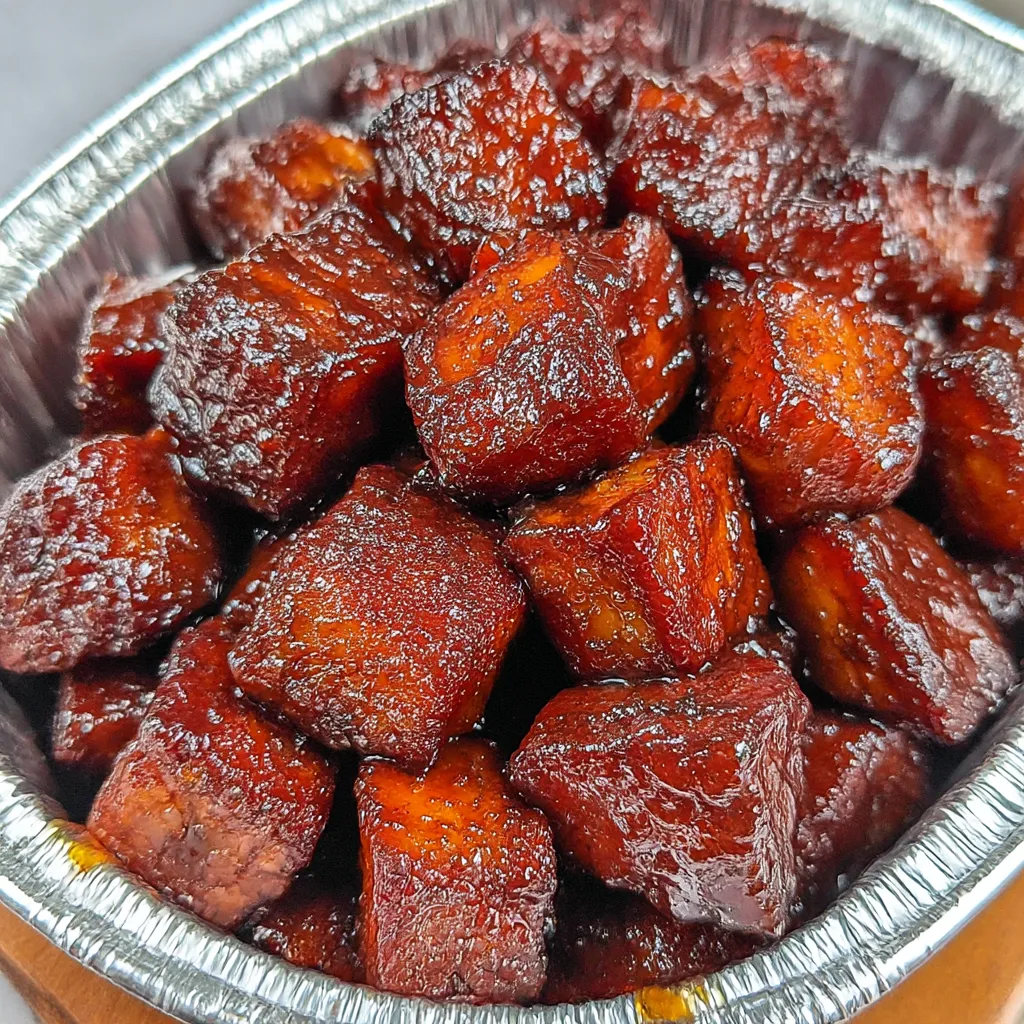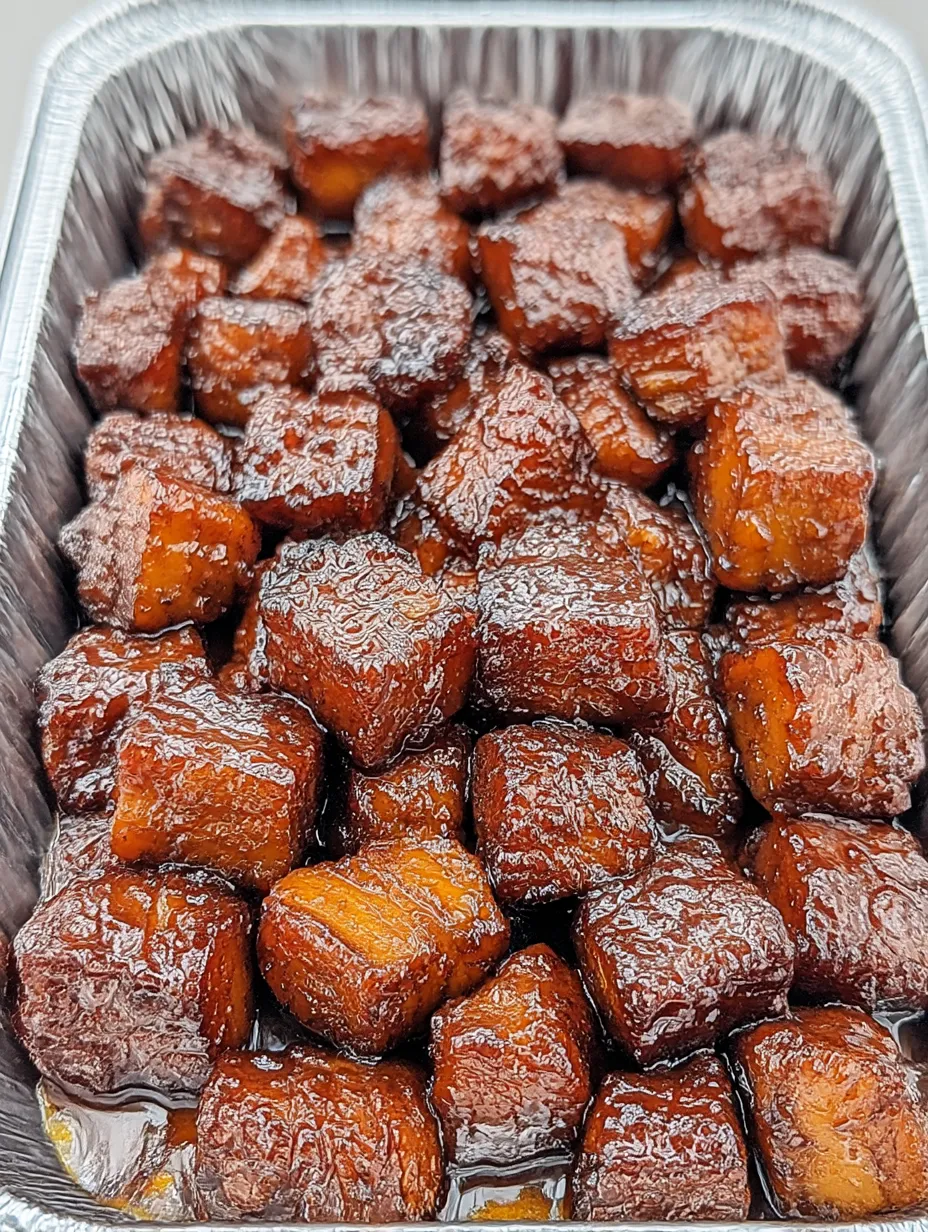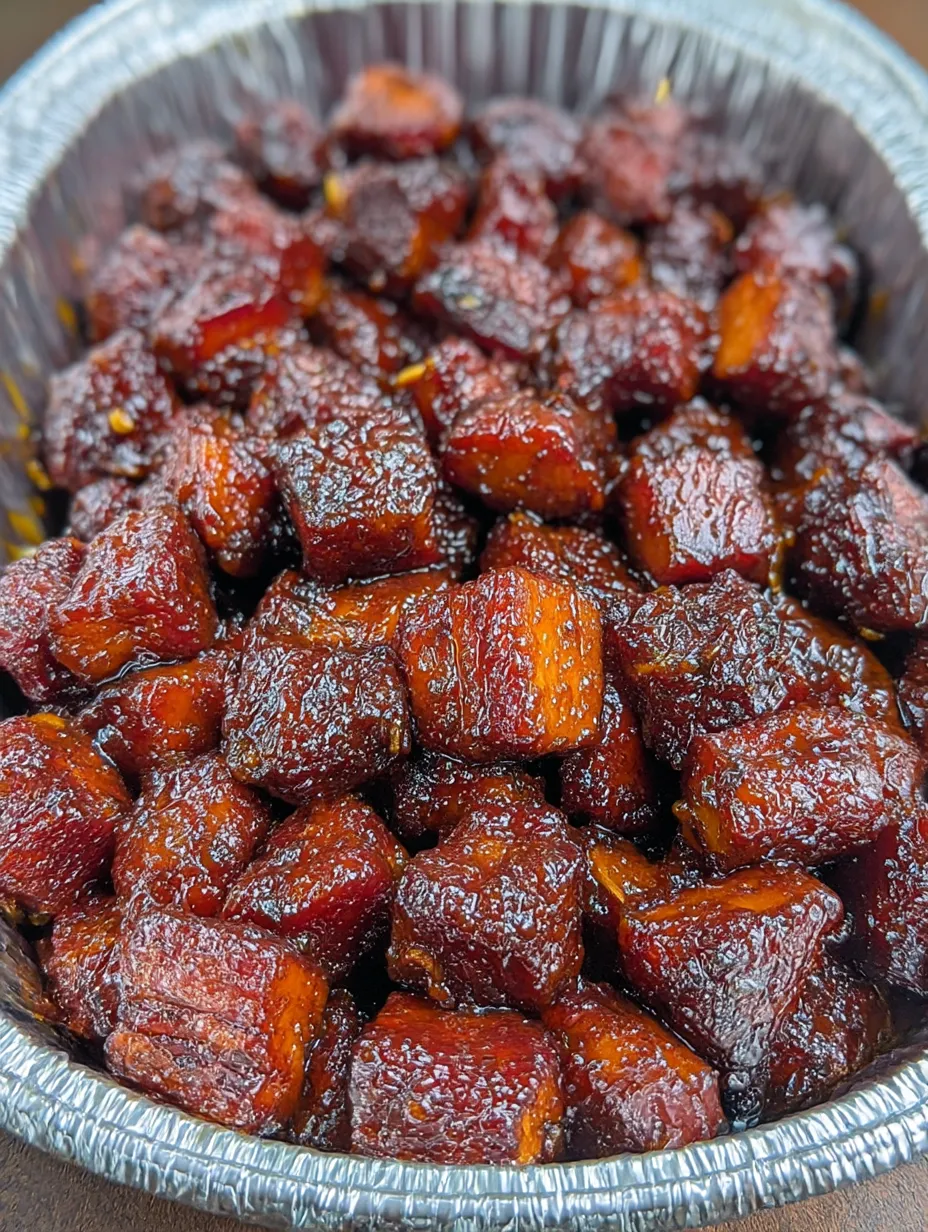 Pin
Pin
Poor Man’s Burnt Ends make BBQ nights possible even on a tight budget. These incredibly tender smoky beef bites are my answer when people crave burnt ends but brisket is just not in the cards. With a chuck roast and slow cooking you can achieve that caramelized sticky bark and deep barbecue flavor at home.
This dish always vanishes first at my family BBQs especially since my cousin started requesting it for game nights. Once you try burnt ends made this way you will look for any excuse to fire up the grill.
Ingredients
- Chuck roast: Choose a well-marbled 2 to 3 lb roast for flavor and juicy texture
- Olive oil: Helps seasonings stick and promotes browning during the smoke
- Brown sugar: Brings caramelized sweetness and helps develop a deep mahogany bark
- Smoked paprika: Adds a smoky depth skip sweet paprika opt for a true smoked variety
- Garlic powder: For savory backbone choose fresh aromatic powder
- Onion powder: Adds umami and boosts complexity
- Chili powder: Offers gentle heat pick a blend you like for balanced spice
- Salt and pepper: Build and highlight all other flavors freshly ground black pepper recommended
- BBQ sauce: Use your favorite brand but go for one with a sweet smoky profile
- Honey or extra brown sugar: Boosts the sauce’s richness and creates that classic sticky burnt end finish
- Foil pan or heavy-duty foil: A must for finishing with the sauce and keeping cleanup simple
Step-by-Step Instructions
- Prepare the Meat:
- Trim your chuck roast of excess fat but leave some for flavor Cut into cubes about one and a half to two inches each Toss them in olive oil until evenly coated
- Season the Beef:
- Mix brown sugar smoked paprika garlic powder onion powder chili powder salt and pepper in a bowl Sprinkle liberally over the beef cubes massage gently so every piece gets coated
- Smoke or Grill:
- Arrange the seasoned cubes on the smoker or on the cool indirect zone of your grill Aim for a grill temperature around 250 degrees Fahrenheit Let them smoke uncovered for two and a half to three hours Turn occasionally so sides get color and flavor Monitor until you see a deep bark develop and the internal temp hits about 165 degrees
- Sauce and Tenderize:
- Once barked up transfer cubes to a foil pan Pour over barbecue sauce and drizzle with honey or extra brown sugar Stir to coat Cover tightly with foil Return to the grill or smoker and continue cooking for another hour to an hour and a half Check for tenderness around 200 to 205 degrees internal temp
- Caramelize the Finish:
- Uncover the pan and keep on the heat for 15 to 20 minutes Stir gently every few minutes to prevent burning and let the sauce thicken and cling until each piece is sticky and deep red
 Pin
Pin
Chuck roast is my secret weapon for classic BBQ flavor on a weeknight My youngest always asks for extra sticky pieces from the very center of the pan and I never mind because those bits are smoky barbecue perfection
Storage Tips
Store any leftovers in an airtight container in the fridge up to four days The flavors actually get deeper after a night in the fridge so they re perfect for meal prep To reheat use the oven or gently warm on low heat in a skillet with a splash of extra sauce to revive juiciness Avoid microwaving if you want to keep that caramelized bark
Ingredient Substitutions
If you cannot find chuck roast round roast works in a pinch but will not be as shreddable For added smoky flavor try adding a little liquid smoke to your BBQ sauce You can use maple syrup instead of honey for a different sweetness or swap out brown sugar entirely in the rub if you prefer a savorier finish If you like things spicy just mix some cayenne in with the other spices
Serving Suggestions
Pile these burnt ends on slider buns for awesome BBQ sandwiches Pair with tangy pickles coleslaw and crunchy chips for a classic spread I also love chopping them up and mixing into baked beans for a next level cookout side They are equally delicious served as an appetizer on toothpicks for parties or big games
 Pin
Pin
Cultural Context
Burnt ends are a beloved Kansas City BBQ tradition usually made from the fatty point of a brisket but classic brisket can get pricey This adaptation using chuck roast was a game changer at my house letting us celebrate all the saucy crusty glory of burnt ends on any weekend It is a tribute to home cooks making flavor happen with creativity and a little patience
Recipe FAQs
- → What cut of beef works best for burnt ends on a budget?
Chuck roast is ideal due to its marbling and affordability compared to brisket, producing juicy, tender bites after slow smoking.
- → Can I make these burnt ends without a smoker?
Yes, use a grill on indirect heat or even an oven set low. Add a small pan of water and wood chips for extra smoky flavor if possible.
- → How do I know when the burnt ends are done?
The beef is ready when it reaches 200–205°F internally and becomes fork-tender, with a caramelized, sticky barbecue glaze.
- → What are good sides to serve with burnt ends?
Classic pairings include creamy coleslaw, tangy pickles, or piling the burnt ends onto slider buns for hearty sandwiches.
- → Can I store leftovers and reheat them?
Yes, store cooled burnt ends in an airtight container in the fridge. Reheat gently in the oven or on the grill to maintain tenderness.
- → How can I add more flavor to the sauce?
Customize by stirring extra honey, brown sugar, or a dash of hot sauce into your favorite barbecue sauce before coating the beef.
